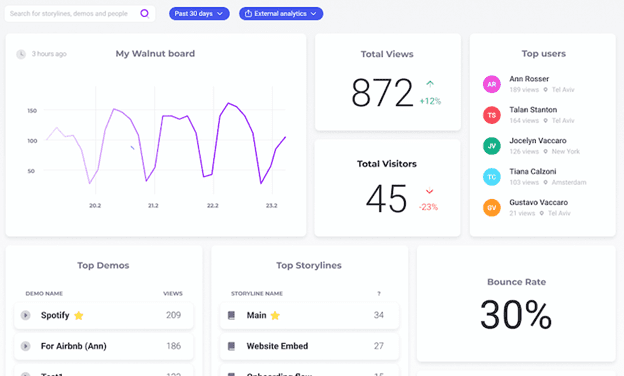In the past, young people saw investing as something left to get done later on in life. Yet, today, society’s eyes are open to the fact that the earlier someone starts putting their money to work, the better. The truth is investing is vital at any age, and the benefits of this practice are multiple and can be enjoyed by people from a wide range of income levels. Naturally, the primary one is generating passive income, with investors accumulating funds without working. That not only leads to building wealth, but it helps stay ahead of inflation and aids in etching a decent retirement plan. Plus, creating a savings pool to fall back on when dire straits roll around. The positive impact of proper investing that pans out can be dramatic on any person’s financial and personal well-being.
Regardless of the type of security an individual has chosen to invest in, low-risk/high-risk, or whether they are on the prowl for short-term or long-term gains, it is essential that everyone monitors the health of their single investments or portfolio via metrics that measure trading performance. These are calculations, ratios, and other information used to analyze a company’s fundamentals for viability, earnings, and potential growth. Without question, one of the most substantial mistakes rookie investors make is not understanding how many of the sector’s most famous metrics work and making decisions based on instinct without any factual guidance.
In most cases, veteran traders or for-hire portfolio managers create an Investment Policy Statement in which they outline the objectives of their investment project, coupling it with the measures used to monitor performance en route to reaching their goals. Usually, the investment time horizon and the performance benchmarks utilized get mentioned here. These are other aspects that factor if a single or group of investments are underperforming or meeting expected standards. What follows is a quick rundown of eight super-established metrics that most top-end brokerages use when assessing how portfolios are doing, hoping to spot adequate periods when course corrections should get made.
Time-Weighted Return (TWR)
Here is a measure that displays a portfolio’s compound growth rate. Investment managers usually incorporate it to compare their returns. And it is handy in such cases because it eliminates effects seen as distorting that get manufactured by outflows and inflows of money. The TWR, as many call it for short, separates the return of a portfolio into distinct intervals based on whether money got withdrawn or added to a fund. Some also refer to this metric as the geometric mean return.
The formula used to calculate it takes the rate of return for each sub-interval, which it gets by subtracting the beginning from the end balance for the period and dividing that by the beginning balance of the interval. Then, the next step is creating a novel sub-interval for each period where a change in cash flow gets noted. It does not matter if it is a deposit or a withdrawal. That can leave multiple periods, each with a rate of return. To these, one gets added, which makes the negative returns simpler to calculate. Then, for each sub-interval, the rate of return should get multiplied by each other, and one should get subtracted from the outcome. That is how the TWR gets reached. In short, the TWR multiplies the returns for every holding period, connecting them to display how the returns got compounded.
The time-weighted return is vital because it tells investors how much money has gotten earned over multiple withdrawals and deposits. Its chief drawback is that this is a somewhat strenuous way to monitor cash flow movements. It is far easier to use computational software, like the one found in stock trading apps.
Money-Weighted Return (MWR)
The MWR, or money-weighted return, is, in the opinion of most analysts, along with the TWR, the most appropriate method of gauging portfolio performance. While TWR provides those in charge of investments with a quality measure to compare performances against essential benchmarks and foreign funds, the MWR supplies investors with a measure of their account’s performance. It helps clarify the impact that decisions have on the bottom line. Sadly, it cannot get used for performance comparison to other funds. And it is not an extremely effective measure of a portfolio manager’s performance.
The best use of MWR is in determining an account’s performance and the influence that decisions have on it. It accounts for the size and timing of withdrawals and deposits to reach these conclusions and its equivalent to the IRR, or internal rate of return. It sets the initial value of an investment to equal withdrawals, dividends added, sale proceeds, and deposits, meaning future cash flows. The precise formula regarding how MWR gets calculated is a bit complex, and it involves the initial rate of return, cash flows, the initial cash outlay, outflows/inflows, and periods. It is paramount to note that the IRR cannot get analytically calculated using this formula but only through trial and error or by utilizing adequate software.
If the MWR seems like an intriguing metric, our suggestion would be for readers to explore it in-depth by reading articles that focus on it, as a thorough examination of it is outside the scope of this article.
Annualized Return
To come to the annualized portfolio return, all one must do is divide the final by the original portfolio value, then raise that figure by 1n, where n is the years the investment got held. The following move is to subtract one and multiply by one hundred. So, if the starting value of a portfolio was one hundred thousand, and the final after a decade is a hundred and fifty, dividing these into figures, one gets 1.5. To that, then the exponent 1/10 gets applied to create 1.04. One gets subtracted, leading to 0.04, and when this number gets multiplied by one hundred, one gets a 4% rate of return.
The ATR (annualized total return) is the geometric average of the sum of money raked thanks to an investment annually over a specific period. It is an apt way for investors to discover how much they are earning by year’s end, and there are different ways to reach this conclusion, aside from the one explained in this subheading. ATR does not reveal volatility/price fluctuations, it only acts as a handy snapshot of an investment’s performance, and for most, that is enough.
Standard Deviation
It aids in figuring out the spread of asset prices from their average or the volatility of the market. Hence, it is an instrument for determining risk. A low standard deviation signifies that prices are steady and risk is low. A high one means the exact opposite. That the prices move widely, and the investment is a risky one. Many define it as a device for measuring the dispersion of a dataset relative to its mean.
To learn what the standard deviation is? Investors must take the square of the difference of each data point, along with the sample mean, finding the total of these values. After they do this, dividing that amount by the variance, the sample size minus one, comes next. The last step is taking the square root of the variance.
Sharpe Ratio
Without question, the Sharpe ratio is one of the more popular tools for measuring risk-adjusted relative returns. It was developed in the mid-1960s by William Forsyth Sharpe, a STANCO 25 Professor of Finance, who revised his original formula in 1994.
The Sharpe formula subtracts the risk-free rate from the return of the portfolio and divides the attained number by the standard deviation of excess return. Initially utilized to denote an investor’s hypothetical minimal borrowing expenses, this ratio represents the risk premium of trade against a bond or Treasury bill, some sort of a safe asset. It chiefly gets selected as a technique to see to what excess historical returns got linked by excess volatility, and its utility rests on the guess that records of relative risk-adjusted returns have somewhat of a predictive value. Per the belief of some top experts, it aids in explaining if excess returns are the products of wise moves or luck.
Sortino Ratio
Invented by Brian Rom in 1983, the Sortino ratio is a version of the Sharpe one. It takes the expected return, subtracting the risk-free rate from the expected investment portfolio return. After doing that, the obtained figure gets divided by the standard deviation of the downside. The principal difference between this tool and the Sharpe ratio is that the latter considers the entire risk (upside and downside, while this approach only factors in the deviation of the downside risk.
Virtually everyone agrees that because the Sortino ratio takes this route, focusing on the negative deviation of returns only, it delivers a better overview of the risk-adjusted performance, mainly given that positive volatility is a benefit here. Therefore, for analysts, portfolio managers, and investors, it is a more than decent resource in assessing an investment’s return for a specific level of hazard.
Information Ratio
Again, this is another measure similar in nature to the Sharpe ratio. But it uses a risky index, like the S&P 500, as a benchmark instead of the risk-free return (usually a US treasury security). The formula for calculating the IR (Information Ratio) is subtracting the portfolio return for a distinct time frame from the return of the tracked benchmark, then dividing this outcome by the tracking error, which can be calculated by taking the standard deviation of the difference from the index and portfolio returns.
In most cases, the information ratio gets implemented to see where the investment skills of a single investor or a portfolio manager lie in creating returns over a specific benchmark. The higher the IR is, the better the person is doing.
Drawdown
The term drawdown is something that has different meanings in different circles. In finance, it signifies how much a trading account or investment has gone down from its all-time high before recovering above this level. Typically, it gets quoted as a percentage, but dollar values may get used, and it is crucial to point out that this is a measure of downside volatility. In simpler words, this is the peak-to-trough decline in a distinct time interval.
An example of a drawdown is a stock investment in, let us say, Microsoft shares worth $100, which have risen to $110 shortly after their purchase. Yet, they have quickly fallen to $80, only to see a rise above $110 a few days later. Since the noted peak was $100 and the trough was $80, the difference between these is $30. If we divide it by the peak, we get 27.3%, the drawdown. It is good to grasp that drawdowns are not the same as losses. They are more unrealized losses and principally get favored for comparing fund performance, evaluating the historical risk of different investments, and analyzing personal trades.
To Sum Up
Metrics are essential in any field, and in the investing landscape, they deliver info necessary for investors to see how effectively their money is working. Everyone holding any security must periodically check its current value, historical records, and projections regarding future earning potential. That best gets accomplished by incorporating some of the apparatuses described in this article. Finding out what the report card of an investment is, enables individuals to review their moves and chart a course going forward that will hopefully improve performance with minimal risk in place. Emotions should never be a factor in investing, as they can often lead us to unreasonable choices. Math is far more reliable and a tool with no biases if investors know how to implement the correct metrics for their portfolios.



































